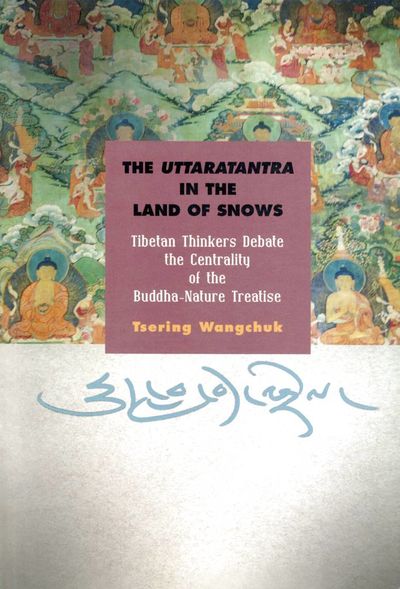The Uttaratantra in the Land of Snows
< Books
m (Saved using "Save and continue" button in form) |
|||
| Line 1: | Line 1: | ||
{{Book | {{Book | ||
|BookParentPage=Research/Secondary Sources | |BookParentPage=Research/Secondary Sources | ||
| + | |BookPerson={{Book-person | ||
| + | |PersonName=Tsering Wangchuk | ||
| + | |PersonPage=Wangchuk, T | ||
| + | |PersonImage=https://research.tsadra.org/index.php/Wangchuk,_Tsering#/media/File:Wangchuk_tsering_U_San_Francisco.jpg | ||
| + | }} | ||
|FullTextRead=No | |FullTextRead=No | ||
|BookEssay=Tsering Wangchuk's The Uttaratantra in the Land of Snows is a clear and concise introduction to the history of the Uttaratantra and buddha-nature theory in pre-modern Tibet. It is an ideal introduction for anyone not yet familiar with the buddha-nature debate in Tibet. Wangchuk summarizes the writings and views of several of the most important Tibetan philosophers who weighed in on buddha-nature between the eleventh and fifteenth centuries from Ngok Lotsāwa through Sakya Paṇḍita to Dolpopa and Gyeltsabje. | |BookEssay=Tsering Wangchuk's The Uttaratantra in the Land of Snows is a clear and concise introduction to the history of the Uttaratantra and buddha-nature theory in pre-modern Tibet. It is an ideal introduction for anyone not yet familiar with the buddha-nature debate in Tibet. Wangchuk summarizes the writings and views of several of the most important Tibetan philosophers who weighed in on buddha-nature between the eleventh and fifteenth centuries from Ngok Lotsāwa through Sakya Paṇḍita to Dolpopa and Gyeltsabje. | ||
Revision as of 08:39, 20 July 2018
With its emphasis on the concept of buddha-nature, or the ultimate nature of mind, the Uttaratantra is a classical Buddhist treatise that lays out an early map of the Mahāyāna path to enlightenment. Tsering Wangchuk unravels the history of this important Indic text in Tibet by examining numerous Tibetan commentaries and other exegetical texts on the treatise that emerged between the eleventh and fifteenth centuries. These commentaries explored such questions as: Is the buddha-nature teaching found in the Uttaratantra literally true, or does it have to be interpreted differently to understand its ultimate meaning? Does it explicate ultimate truth that is inherently enlightened or ultimate truth that is empty only of independent existence? Does the treatise teach ultimate nature of mind according to the Cittamātra or the Madhyamaka School of Mahāyāna? By focusing on the diverse interpretations that different textual communities employed to make sense of the Uttaratantra, Wangchuk provides a necessary historical context for the development of the text in Tibet. (Source: SUNY Press)
| Citation | Wangchuk, Tsering. The Uttaratantra in the Land of Snows: Tibetan Thinkers Debate the Centrality of the Buddha-Nature Treatise. Albany: State University of New York Press, 2017. |
|---|---|


